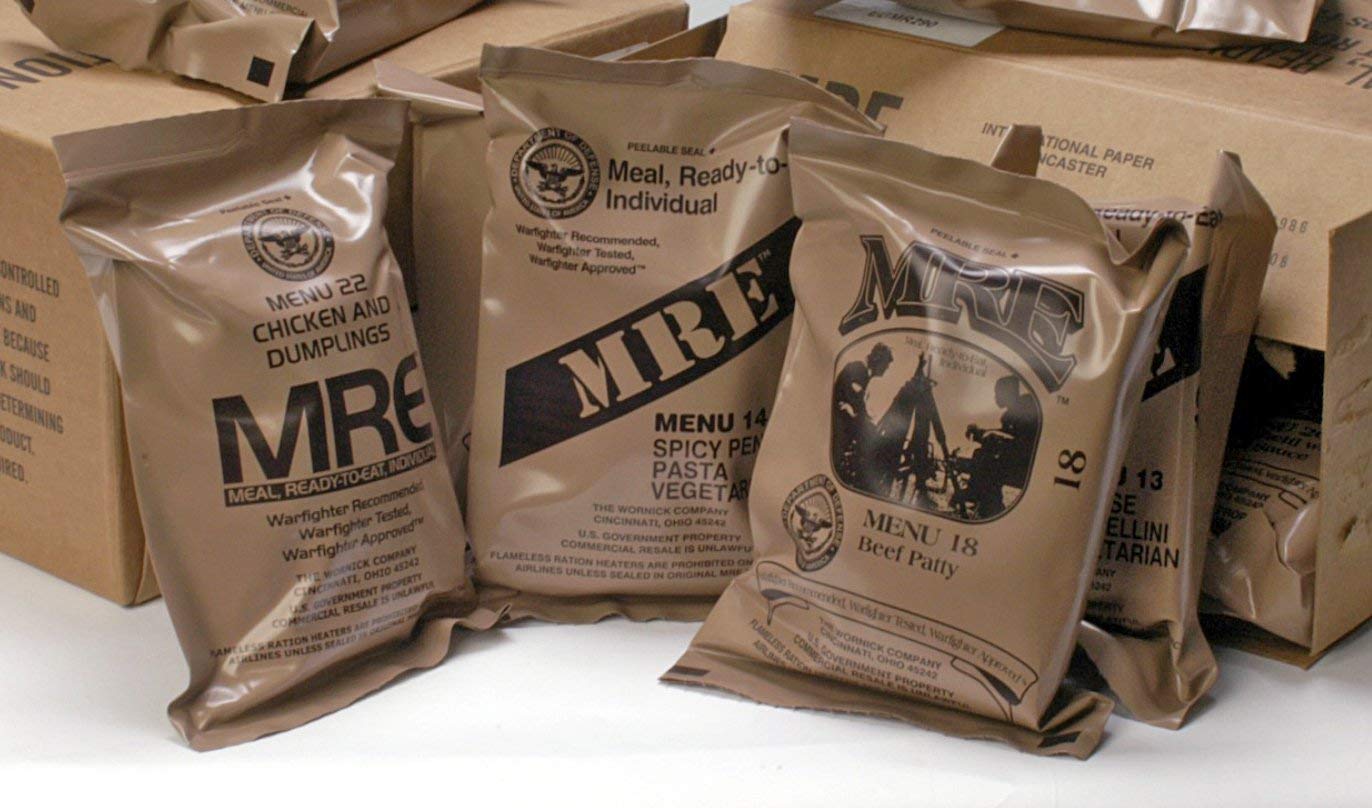The History of MREs

Meals ready to eat (MREs) have a long history and are classified as the best quick-fix food solution. It is a culinary staple food for any airman, sailor, soldier, or marine serving on the battlefield as a member of the armed forces. Modern MREs have also been customized for home use and come with a special pouch with clear labels indicating that the meals are ready to consume.
So, there is nothing wrong or abnormal with consuming the meal as a civilian. The meals have only been classified as military food as they offer solutions that could be best for a soldier on the battlefield. Besides, the meals were first invented as solutions for the service members.
What Is the Content of These Meals?
Normally, MREs contain packets of bread or crackers, peanut butter, an accessory pack, a spread of cheese, slide dish, some powdered beverage mix, and of course, the main course.
Nowadays, MRE comes with different main courses but be sure to find the entree indicated on the packet to help you decide. Notably, the entrée comes in a unique pouch that can be ration heated through embedded heaters.
How Do I Heat Them?
For heating, you only need to open the flameless ration heater and insert the entrée pouch. When adding the water, be mindful not to overfill it and spoil the dish and lend the heater useless. That is not all, and it was just a touch.
If you want to be sure with your heating, look at the heater and find instructions guiding you on every step to effectively heat your main course and serve the dinner within minutes.
Are MREs Certified?
MREs have been the solutions for emergency and conflicts as people lack the appropriate equipment and raw materials to prepare nutritional food. It would be hard to cook for hundreds of people, especially during a disaster or on the battlefield.
MREs have offered solutions during these desperate situations and environments. MREs’ current developments are a culmination of prolonged military use of rations dating far back to the Revolutionary War.
So, How Did MREs Come to Be?
Food shortages were becoming a common issue during world war 1 with civilians and military personnel lacking proper nutrition to keep them strong and healthy. These issues lead to the development of rations that offered temporary relief to the affected groups. However, studies found that the rations produced at the time were extremely high in fat and nutritionally imbalanced.
These findings led to the development of a better ration that somehow resembled a corned beef hash. Specifically, the ration had 12 ounces of a pan of canned meat or bacon.
That was not the end of it as the second war roomed and more rations were introduced. Notably, the Quartermaster Food and Container Institute and the Medical Nutritional Laboratory were the first to be commissioned by the U.S army to provide emergency rations in 1937. At that time, it was the Ration “D” that was known to withstand high temperatures and had a relatively high energy value.
The period throughout the world war witnessed the introduction of rations that featured breakfast and dinner items. For instance, the C-ration had meat potato hash, meat vegetable stew, and meat and beans as its main courses. Similarly, the K-ration had separate meals for breakfast, dinner, and supper.
These rations had a significant improvement compared to the predecessor as they were nutritionally balanced, had better storage qualities, and were made to be palatable. The rations also came with six 12-ounce cans and an opener to open the strip soldered at each can’s base.
The results from these rations had already prompted robust research regarding the health and nutritional intake of soldiers, especially while in combat. The Department of Defense (DoD) was a significant interest to these studies as it would benefit its operations. By 1963, the DoD had already developed a Meal, Ready to Eat to replace the canned meal.
The new improvement came with modern packaging technology and food preparation. The next event that required a large amount of this new ration was the Vietnam War, where it was supplied to the special operations troops. The ration was freeze-dried and needed almost two pints of water to reconstitute and cook.
As you may know, Vietnam is a Humid country and experiences torrential downpours contributed by the monsoons making water plenty. The problem was contamination as water contained viruses and parasites, which could spell doom for the troops. Contaminated water would cause coughing, fever, diarrhea, and even death.
Since the soldiers had to eat, they were forced to either boil the water before consumption or mix it with iodine tablets, which left the food with a terrible taste. Therefore, soldiers consumed the meals dry when in a desperate situation and were forced to drink extra water later to prevent dehydration.
These challenges and expenses led to the limited usage and eventual discontinuance of the ration. Then came the retort pouch in1986 that came with more than five years of shelf life and could be consumed straight from the package without heat or water. Since then, the ration has undergone tremendous development with a Flameless Ration Heater introduced in 1990, making it the MREs we know today.
Although MREs’ history highlights developments through military departments, you don’t have to be in the military these days to consume the delicious meals. Advanced technology has provided platforms that provide MRE deliveries in hours. So the next civilian MRE can be a click away with customized ingredients and additional settings such as spoons, towels, salt, and chewing gum.
MREs have now become common for various purposes such as emergency, sporting, and nutrition. Remember that the meals continue to be used in the meals today and have become an excellent investment for civilians since they last for more than five years if properly kept. These characteristics make the meal outstanding, showing that it has come a long way from where it began.